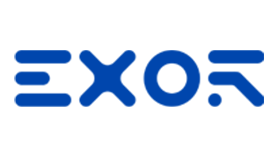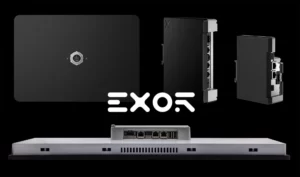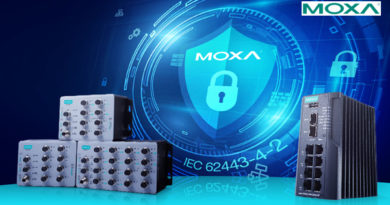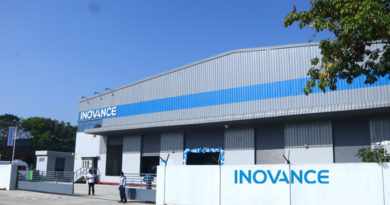Your Next HMI is not an HMI

This article will discuss:
- The evolution of HMIs and why this evolution is necessary
- The role edge computing plays in advancing the development of today’s HMIs
- How future HMIs will be used on the shop floor and the benefits they provide
Early human-machine interfaces (HMI) were designed to assist humans to control machines through simplistic buttons such as the on and off switch. With the introduction of edge computing, cloud computing, and automated systems in industrial facilities, there arose a need for adaptive HMIs capable of more advanced human-computer communications and control on the shop floor. As Industrie 4.0 and the automated systems it facilitates continue to become more complex, the relationship between humans and machines requires dynamic solutions to ease collaboration and interactive activities.
The need for dynamic human-machine interfaces
In the 80s, human-machine interfaces were designed to help operators transition from directly controlling machines to a more supervisory role over shop-floor equipment. The aforementioned change came with advancements in equipment technology and the need to optimize industrial processes through automation.
By 2011, Industrie 4.0, which defined interconnected cyber-physical systems, had been introduced. The disruption that came with interconnected equipment led to the sharing of data across multiple machines and devices on the shop floor, with a centralized computing system in the mix. The centralized computing system provided enough capacity for storing machine data and handling computing resources for data analytics.
The interconnected cyber-physical system also meant the days of humans reading simplistic machine data from stand-alone equipment using HMIs had come to an end. That era was replaced by a new age in which humans are expected to communicate with both stand-alone equipment and the interconnected pieces of equipment within a system. So, HMIs must be capable of providing the data collected from an interconnected system using formats humans understand.
The need for interoperability, whereby actionable information can be transferred to and from equipment, requires the support of HMIs with the capacity to handle some computing activities. Examples include aggregating shop-floor data and data processing while serving as a friendship node that can transfer data packets to individual pieces of equipment within an interconnected network.
The HMI of the future is expected to be an edge computing device with the ability to process data at the edge while presenting complex machine data in a language humans understand. The HMI hardware must also be able to function optimally in harsh industrial environments such as the manufacturing industry. The multiple functions expected of the next generation of HMIs will lead to an evolution from a supervisory role over individual machines to remote monitoring, safety, and management solutions for interconnected cyber-physical systems.
Edge computing and your next HMI
The interconnected cyber-physical systems that define Industrie 4.0 also consist of IoT and edge devices, the inclusion of which will facilitate the decentralization of data-processing tasks from a centralized location. The centralized location in this case could either be the cloud or an on-premise computing platform.
The decentralized computing that the edge brings ensures independent actions from devices and equipment on the shop floor which holds the key to unlocking Industrie 4.0. Edge computing also provides the needed support to achieve near real-time automation for Industrie 4.0 applications. An example is the material handling robot used within smart facilities. Such robots serve as edge devices because they are equipped with enough computing resources to make decisions in real-time when navigating the shop floor.
In the above example, the robots make use of only the data they require to function optimally while either discarding other supposedly irrelevant data sets or sending them to the cloud. Today’s HMIs are expected to follow the decentralized templates of edge devices with an additional feature. Unlike the robot, the HMI also interfaces with humans in real-time to ensure the operator understands the ongoing operations within a network of devices or machines. So, the template for the next HMI is a decentralized edge device that transmits information to humans to ensure usability and control over specific Industrie 4.0 use CASES.
The decentralized nature of computing HMIs will also leverage cloud computing to handle more complex tasks. HMIs will have the power to juxtapose communication between the edge and the cloud which will simplify Industrie 4.0 Implementations and deliver real-time data analytics to the factory floor.
Use cases for edge computing HMIs
The manufacturing industry is expected to reap the most rewards from edge computing, and this is also the case for dynamic HMIs with computing capabilities. The next generation of HMIs is expected to be the key to implementing Industrie 4.0 business models. Some examples include:
- Remote machine monitoring for legacy equipment – The collection of machine data using industrial cloud solutions has been made possible by IoT platforms, wireless connections, and wired connections for legacy equipment. Such development makes remotely monitoring machines possible for project managers, engineers, and supervisors using interfaces or dashboards on computers.
HMIs bring a new perspective to remote machine monitoring and interoperability as the insight obtained from the data analytics that takes place in the cloud can be sent directly to HMIs in real-time. The insight from remote data analytics can then be applied by operators on the shop floor.
Conclusion
High compute, edge devices or HMIs are the last part of the jigsaw puzzle to permit the full implementation of Industrie 4.0 benefits. Advancements in technology mean the next HMI will do more than just provide you with a means to control shop-floor equipment. HMIs will be durable and dynamic in terms of the Industrie 4.0 models they can be applied to, making them an integral part of every smart manufacturing or industrial process.
Exor India P.Ltd.
Office No. 1901/02, 19″Floor,Ambience Court,
Phase 2, Sector No. 19D, Vavi Mumbai -400705, India.
Tel: +91 2227840422 Email: sales.in@exorint.com,
support.in@exorint,Website: wwww.exorint.com




